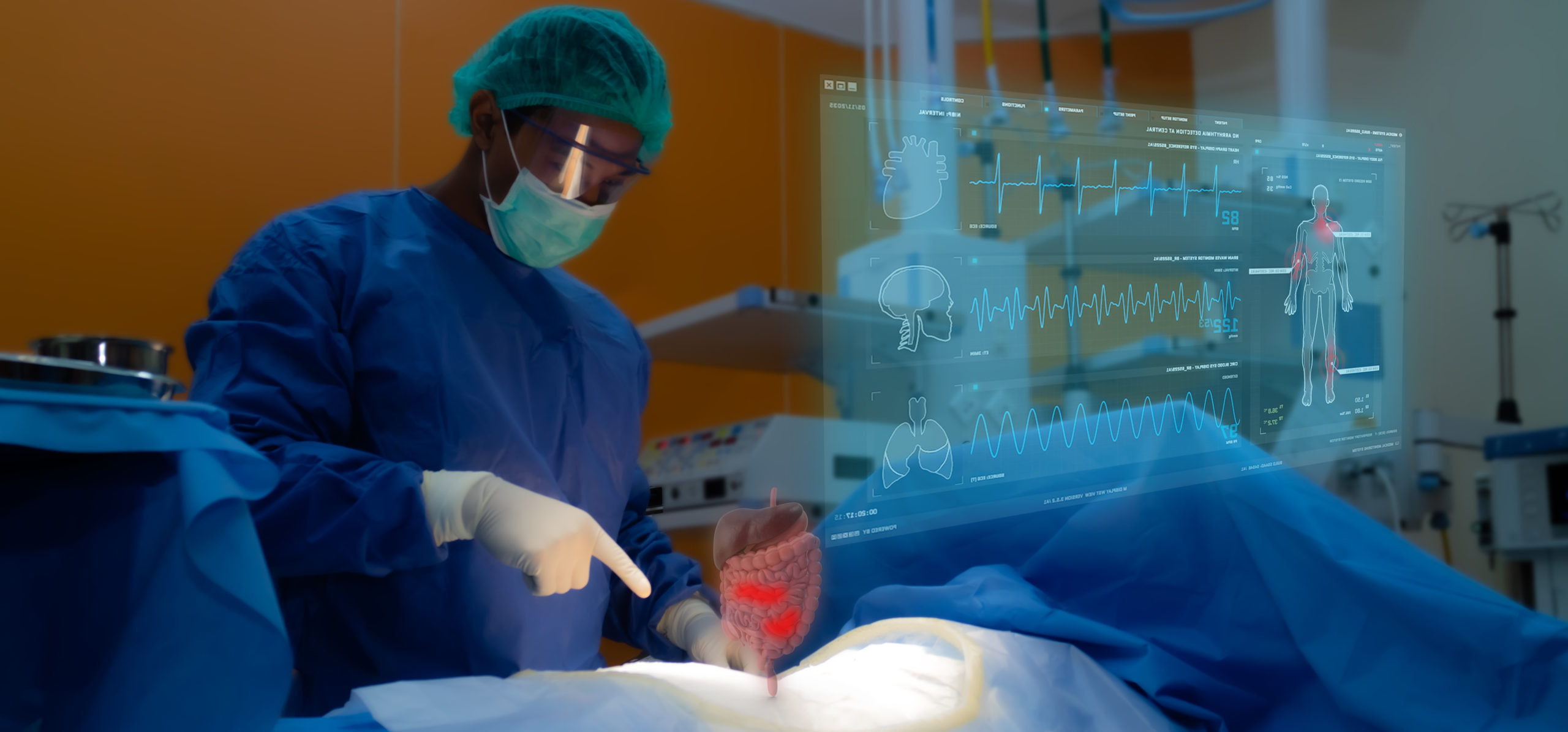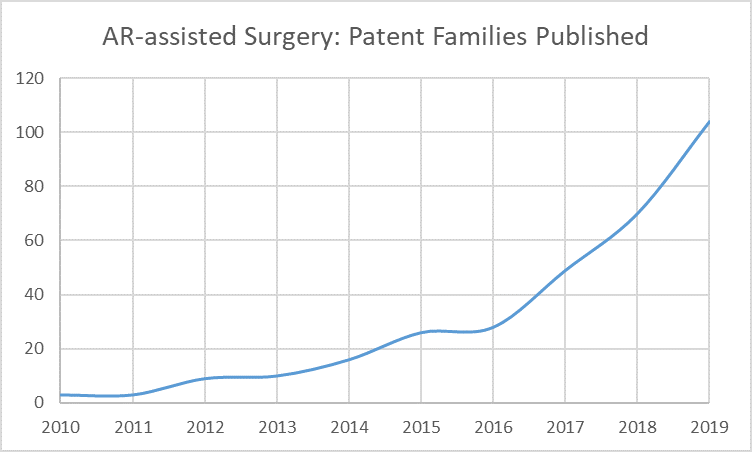
The development of Augmented Reality (AR) assisted surgical techniques is moving rapidly, with GlobalData predicting the next 10 years will see the AR market in health care reach $76 billion[1]. AR displays can be used in many ways to assist in surgical procedures or surgical training. For example, an AR display may show real-time information about the patient, and may even visually identify important locations when viewing the patient.
Such techniques are widely applicable, whether in more invasive techniques where information may be added to augment a direct view of the patient or in less invasive techniques where information may be added to a fibre optic feed.
The summer of 2020 saw significant development in the augmented reality surgery space, largely due to the recent advances in AR headset technology facilitating a new range of surgical techniques. The increased R&D effort in this area has been reflected with a sharp increase in patent filings over the last few years, as shown in the graph below showing the number of patent families published each year relating to the application of AR to surgery (data obtained from Patbase.com).

However clear it may be that such techniques can save time or improve surgical outcomes, patenting such technologies requires careful planning. In particular, there are a number of categories of “excluded subject matter” – technologies that are not considered patent-eligible in many jurisdictions – that are relevant to AR-assisted surgery techniques. Therefore, it is essential that these legal restrictions are considered carefully when drafting patent applications in the AR surgery field to ensure the broadest protection can be achieved. Some of the most important considerations are explained below.
Displaying information
Many countries do not issue patents for inventions regarding the presentation of information. This is particularly relevant to AR-assisted techniques, where often the methods involve overlaying supplementary information to the user on a display. For example, after a medical parameter such as a position of an endoscope has been determined, simply displaying the position as text on a conventional screen would not be patent-eligible in those countries, even if that particular information had never previously been displayed.
However, a new way of calculating the position of the endoscope may be patent-eligible, because the information is itself new and technical, regardless of how it is presented. Furthermore, the way in which information is presented may also be patent-eligible. For example, a display using a new way of linking an AR object to a feature appearing in endoscope footage would be patent-eligible.
Decision T 928/03 of the Boards of Appeal of the European Patent Office relates to a European patent application that claimed an invention in which an arrow was used to indicate the position of an off-screen object relative to a currently-displayed field of view. This was found to be a technical solution to meet the requirement to zoom in on a specific area, and simultaneously meet the requirement to present information about a larger field.
By framing the inventive concept correctly, the restriction on patenting methods of displaying information can be avoided and broad protection for new techniques in this area can be achieved.
User interfaces
In Europe, at least, the possibility that an AR assistance invention may be considered patent-eligible can be improved by ensuring that the patent application is drafted with a focus on how the user interacts with the information that is presented.
Indeed, the European Patent Office has indicated that a display which credibly assists the user in performing a technical task, by means of a continued and/or guided human-machine interaction process, is patent-eligible.
For example, decision T 690/11 of the Boards of Appeal assessed an interface for a dialysis system, which displays step-by-step instructions as a user performs the instructions. Operating the dialysis system was a technical task and therefore the display of step-by-step instructions was considered to be patent-eligible.
On the other hand, decision T 336/14 of the Boards of Appeal assessed an interface for a blood treatment machine, which assists the user by displaying a set of operating instructions. The European Patent Office decided that this static display of instructions was not a continued interaction and therefore not patent-eligible.
Applying this comparison to drafting patent applications for AR (surgical) assistance inventions, it is useful to ensure that there is a description of how AR objects react to what is happening in the surgery, and how a user of the AR assistance may react to the information presented.
There are many other factors to consider when applying for a patent for medical technology. For example, there are additional policy restrictions on patents for diagnosis and patents for surgery (as discussed in Dominic Jacques’ recent article).
As a result, it is important to ensure that your patent application is carefully drafted with all relevant legal factors in mind, and it is advisable to consult with a patent attorney at an early stage. If you have any questions about obtaining patent protection for your medical AR technology, then please find my contact details here or contact us at MedTech@gje.com.
[1] https://www.globaldata.com/ar-is-set-to-succeed-vr-as-leader-in-the-healthcare-space-owing-to-diminishing-costs-and-increasing-capabilities/
